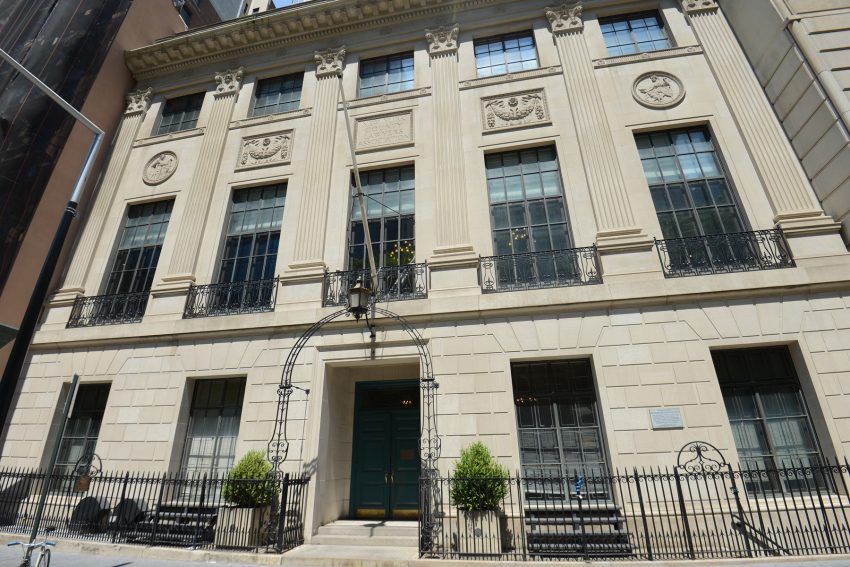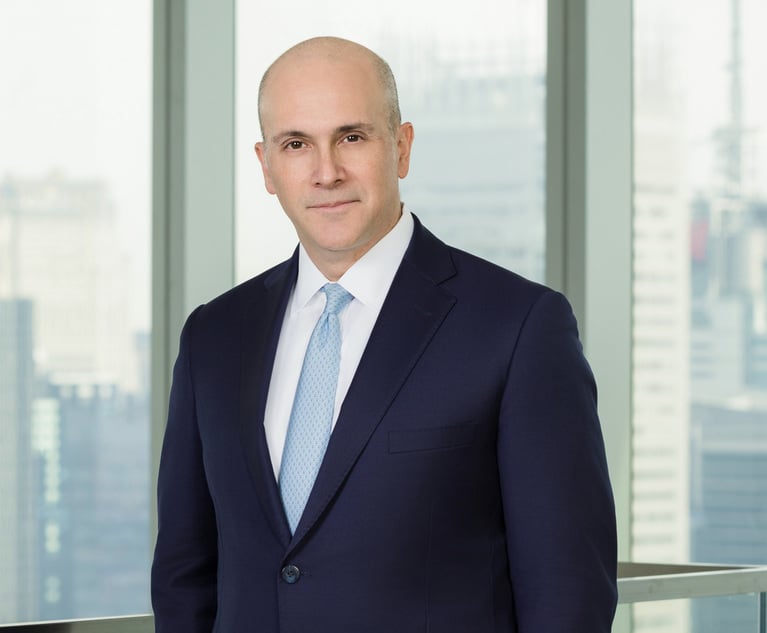NY Bar Associations Look to Sell, Rent Their Buildings as Membership Declines or Stagnates
Bar associations in New York and around the country are transforming rapidly in reaction to demographic trends: a millennial generation that prefers virtual communities, law firms that don't want to provide financial support and lawyers who are questioning the value of belonging.
September 04, 2018 at 12:25 PM
4 minute read
 New York County Lawyers' Association building at 14 Vesey St. Photo: Monika Kozak/NYLJ
New York County Lawyers' Association building at 14 Vesey St. Photo: Monika Kozak/NYLJ
The New York County Lawyers Association has hired an investment team to sell its majestic 87-year-old headquarters on Vesey Street.
The New York State Bar Association is marketing its stately building between the Capitol and Court of Appeals as an events venue.
The Brooklyn Bar Association is looking to pump much-needed capital into its coffers by taking out a mortgage or a line of credit or having its leaders donate $2,500 each.
The American Bar Association is slashing dues to attract members in the face of a loss of 56,000 of them in the last decade.
“There's always been pressure to recruit and retain members but it's clear that the pressure has never been as great as it is today,” said New York State Bar Association president Michael Miller. “Whether it's a Kiwanis club or a professional organization like bar associations or the AMA, there has been a marked decline in how people associate.”
Bar associations in New York and around the country are transforming rapidly in reaction to demographic trends: a millennial generation that prefers virtual communities, law firms that don't want to provide financial support and lawyers who are questioning the value of belonging.
For its part, the NYCLA has hired a team from CBRE to market and sell its building but its executive director, Sophia Gianacoplos, says the association is still in the fact-finding stage.
“It would have to be a great deal. We would have to have a great place to go to,” she said as she gave a tour of the four-story Vesey Street building.
The building, a New York City landmark, is the work of Cass Gilbert, the architect who designed the U.S. Supreme Court. The walls are so thick, however, that connecting to Wi-Fi in every nook and cranny is a challenge and the facility seriously needs more widescreen televisions.
There was a time not so long ago when new lawyers flooded the historic building a few times a year to attend orientation for the First Department. While the new lawyers were often impressed with the building's beauty, almost all of those who joined the association said in a survey that it would be fine to sell it, said Toni Valente, director of marketing and membership.
The state bar is not considering selling its headquarters but it's being marketed prominently on the association's website as an events venue, and Miller wants to hold more of the association's programming there.
The state bar did experience a decline in membership from 74,075 in 2007 to 69,367 in 2017 but has restructured its staff to save money and be more efficient. “We have had to make some hard decisions because there are a lot of sacred cows that have developed over the years,” he said.
The president of the Brooklyn Bar Association wouldn't talk publicly about its finances but a source close to its operation said it was in financial difficulty.
“It needs to raise money and is considering a number of options: taking a mortgage on the building; obtaining a line of credit; raising money by asking the leaders of the group to donate $2,500 each. No decision can be made until the trustees meet in September to vote on a plan,” the source said.
Bret Parker, executive director of the New York City Bar Association, said the city bar's membership is flat. In response, the association is offering free CLEs and has hired a caterer to make its 44th Street building more attractive as a weekend destination.
“We're very aware that the legal profession demographics have shifted,” he said. “There was a period of time when many lawyers thought it was just part of being a lawyer and being in the profession that you would join the New York City bar association. Now we're expected to make a business case.”
But selling the building, which has many activities every day and evening, is not something the New York City bar wants to do, he said.
“It's a physical place for people to come together in a world where people don't do that so often,” he said.
This content has been archived. It is available through our partners, LexisNexis® and Bloomberg Law.
To view this content, please continue to their sites.
Not a Lexis Subscriber?
Subscribe Now
Not a Bloomberg Law Subscriber?
Subscribe Now
NOT FOR REPRINT
© 2025 ALM Global, LLC, All Rights Reserved. Request academic re-use from www.copyright.com. All other uses, submit a request to [email protected]. For more information visit Asset & Logo Licensing.
You Might Like
View All

Cooley Promotes NY Office Leader to Global Litigation Department Chair

NY Judge Resigns After Avoiding Jury Duty by Telling Court He Couldn't Be Impartial

Charlie Javice Jury Will Not See Her Texts About Elizabeth Holmes
Trending Stories
- 1Data Breaches in UK Legal Sector Surge, According to ICO Data
- 2PayPal Faces New Round of Claims; This Time Alleging Its 'Honey' Browser Extension Cheated Consumers
- 3Fired NLRB Member Seeks Reinstatement, Challenges President's Removal Power
- 4NY Inspector General Announces Attorneys Hired to Lead Upstate Region and Gaming
- 5Carol-Lisa Phillips to Rise to Broward Chief Judge as Jack Tuter Weighs Next Move
Who Got The Work
J. Brugh Lower of Gibbons has entered an appearance for industrial equipment supplier Devco Corporation in a pending trademark infringement lawsuit. The suit, accusing the defendant of selling knock-off Graco products, was filed Dec. 18 in New Jersey District Court by Rivkin Radler on behalf of Graco Inc. and Graco Minnesota. The case, assigned to U.S. District Judge Zahid N. Quraishi, is 3:24-cv-11294, Graco Inc. et al v. Devco Corporation.
Who Got The Work
Rebecca Maller-Stein and Kent A. Yalowitz of Arnold & Porter Kaye Scholer have entered their appearances for Hanaco Venture Capital and its executives, Lior Prosor and David Frankel, in a pending securities lawsuit. The action, filed on Dec. 24 in New York Southern District Court by Zell, Aron & Co. on behalf of Goldeneye Advisors, accuses the defendants of negligently and fraudulently managing the plaintiff's $1 million investment. The case, assigned to U.S. District Judge Vernon S. Broderick, is 1:24-cv-09918, Goldeneye Advisors, LLC v. Hanaco Venture Capital, Ltd. et al.
Who Got The Work
Attorneys from A&O Shearman has stepped in as defense counsel for Toronto-Dominion Bank and other defendants in a pending securities class action. The suit, filed Dec. 11 in New York Southern District Court by Bleichmar Fonti & Auld, accuses the defendants of concealing the bank's 'pervasive' deficiencies in regards to its compliance with the Bank Secrecy Act and the quality of its anti-money laundering controls. The case, assigned to U.S. District Judge Arun Subramanian, is 1:24-cv-09445, Gonzalez v. The Toronto-Dominion Bank et al.
Who Got The Work
Crown Castle International, a Pennsylvania company providing shared communications infrastructure, has turned to Luke D. Wolf of Gordon Rees Scully Mansukhani to fend off a pending breach-of-contract lawsuit. The court action, filed Nov. 25 in Michigan Eastern District Court by Hooper Hathaway PC on behalf of The Town Residences LLC, accuses Crown Castle of failing to transfer approximately $30,000 in utility payments from T-Mobile in breach of a roof-top lease and assignment agreement. The case, assigned to U.S. District Judge Susan K. Declercq, is 2:24-cv-13131, The Town Residences LLC v. T-Mobile US, Inc. et al.
Who Got The Work
Wilfred P. Coronato and Daniel M. Schwartz of McCarter & English have stepped in as defense counsel to Electrolux Home Products Inc. in a pending product liability lawsuit. The court action, filed Nov. 26 in New York Eastern District Court by Poulos Lopiccolo PC and Nagel Rice LLP on behalf of David Stern, alleges that the defendant's refrigerators’ drawers and shelving repeatedly break and fall apart within months after purchase. The case, assigned to U.S. District Judge Joan M. Azrack, is 2:24-cv-08204, Stern v. Electrolux Home Products, Inc.
Featured Firms
Law Offices of Gary Martin Hays & Associates, P.C.
(470) 294-1674
Law Offices of Mark E. Salomone
(857) 444-6468
Smith & Hassler
(713) 739-1250






